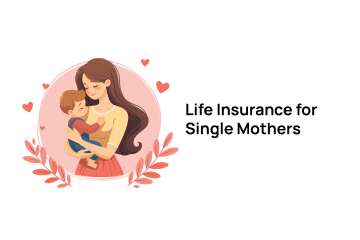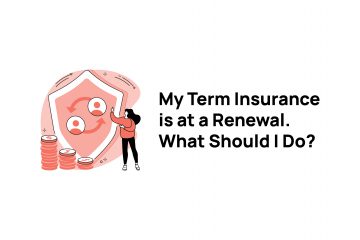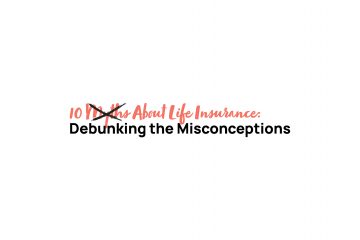What is Couple Insurance?
As the name would suggest, couple insurance is a life insurance product designed to cover both you and your partner. Just like any other type of life insurance policy, couple insurance can be tailored to suit all kinds of lifestyles.
Is couple insurance for life?
In short, not really. Couple insurance is primarily sold as a term life insurance product. This means that any policy you and your partner purchase will be valid for a set period of time. Once the policy term is over, you’ll have two options to choose from: renewing your plan, or switching to a new one.
All term life insurance policies are made up of the same three building blocks:
- A death benefit, or coverage amount: The amount of money you receive if the insured party dies.
- A time frame: The length of time you are covered by your policy.
- A life insurance premium: The amount you pay your provider in exchange for coverage.
Understanding these life insurance basics will make unpacking couple insurance a lot easier. Trust us.

Two kinds of Couple Insurance: Joint vs. Single
There are two categories of life insurance for couples in Canada: joint policies and single policies. Let’s have a closer look at how these policies use the three building blocks…
Joint Insurance
Joint couple insurance, also known as joint-first-to-die term insurance, covers you and your partner under the same policy.
When it comes to coverage, you and your partner will be insured for an identical sum. In other words, the surviving partner will receive the same amount regardless of who passes on first.
So what does “first-to-die” mean?
Well, this is another way of providing a term for your policy. Rather than state an exact time frame (like 10 or 20 years), the policy will last until one of the insured passes away. When this happens, the policy will have reached its term.
Of course, this means that once one partner has passed away, the coverage stops for their significant other.
Let’s look at an example:
A husband and wife in their 70s share a joint policy. The husband passes away resulting in a single insurance payout. Now that she is widowed, the wife will need to apply for a new policy to continue her coverage.
This can be tricky for the surviving partner for a couple of reasons:
- Grief: First and foremost, purchasing life insurance is often not high on the priority list for someone in mourning.
- Cost: Purchasing a life insurance policy becomes more and more expensive as we get older. Our widow, for example, would have to pay significantly more than she previously did for the same coverage amount under a new policy.
Other difficulties can arise with joint first-to-die term insurance while both insured people are still alive. This is because joint policies are usually pretty inflexible.
Let’s say you and your partner want to split up or get divorced. Removing your partner as your beneficiary on a joint life insurance policy is often an arduous process. And, although you may want to divide your policy, most insurers won’t allow it. The only other option in this scenario would be to cancel your life insurance policy.
Now, we’ve done a good job of pointing out why joint policies can be a logistical headache, but there is one major benefit to joint coverage. Enter the third building block: the premium.
The biggest advantage of joint-first-to-die term insurance plans is that they are usually more affordable than single life insurance policies.
Some insurance providers will also offer added bonuses to joint-first-to-die term policies such as:
- Double payouts in the event of simultaneous death: This feature guarantees two death benefit payments if both insured parties pass away within a specific time frame – typically 45 to 90 days.
- Insurability privilege: This is when an individual requests continued coverage from their insurance provider after their partner has passed away without submitting to a new underwriting process. This feature is usually reserved for clients under a certain age and the application must be submitted within a strict time frame.
Single Life Insurance
Unlike joint-first-to-die policies, single life insurance considers both people in the couple as separate clients. This means each person is insured for separate coverage amounts under a separate policy. So, if one of two partners passes away, the coverage still stands for the surviving individual.
In addition to giving a surviving individual longer lasting support, single life insurance policies also make it easier to change a beneficiary or adapt a policy if a couple breaks up.
However, there’s always a down side. The trade off for more generous insurance terms and an adaptable coverage amount is a higher premium. The difference in price between joint and single life insurance policies will depend on your age.
For young couples, the difference between the two policy types is less striking. But, as a couple gets older, premium increases for single life insurance policies escalate quickly. So, the older the couple, the more they will save on a joint first-to-die life insurance policy.

Do I need to be married to get couple insurance?
Put simply — no. Couple insurance applies to any two or more people who have what is referred to as “insurable interest” in the other person living for longer. This insurable interest is usually financial, but not always romantic. So, couple insurance could be perfect for:
- A married couple
- A long-term unmarried couple
- Common-law partners
- A close business relationship
- A long-term platonic partnership
Essentially, if you share financial responsibilities (eg. mortgage payments or business loans) with someone important in your life, couple insurance is the product for you.
What are the advantages of couple insurance?
Like all life insurance products, couple insurance exists to give you peace of mind. In the wake of losing a loved one, it can be a huge reassurance to have financial stability.
Joint couple insurance does this by minimizing the amount of money you pay in premiums and making a policy specific to you and your significant other. Single life insurance policies cost a little more, but have the advantage of longer-term protection.
Get a free quote

What kind of insurance is right for you?
Here are the key questions to ask yourself when considering couple insurance policies:
- Do you have children or other dependents who require long-term financial aid?
- If yes, then a single payout from a joint first-to-die term policy wouldn’t be enough support.
- What are your long-term financial commitments, such as mortgages or business loans?
- Make sure than any policy you choose will provide enough coverage to pay off your outstanding debt.
- Are you concerned that you and your partner may split up in the future?
- If yes, then a single policy is more easily adaptable.
- What kind of policy can you afford?
- Remember, joint policies are more budget friendly in the long run than single life insurance plans.
So there we have it!
Now you know the ins and outs of joint first-to-die life insurance policies and single couple plans. You can always book a call with us to chat further or head over to our quote calculator and get a quote.






























































